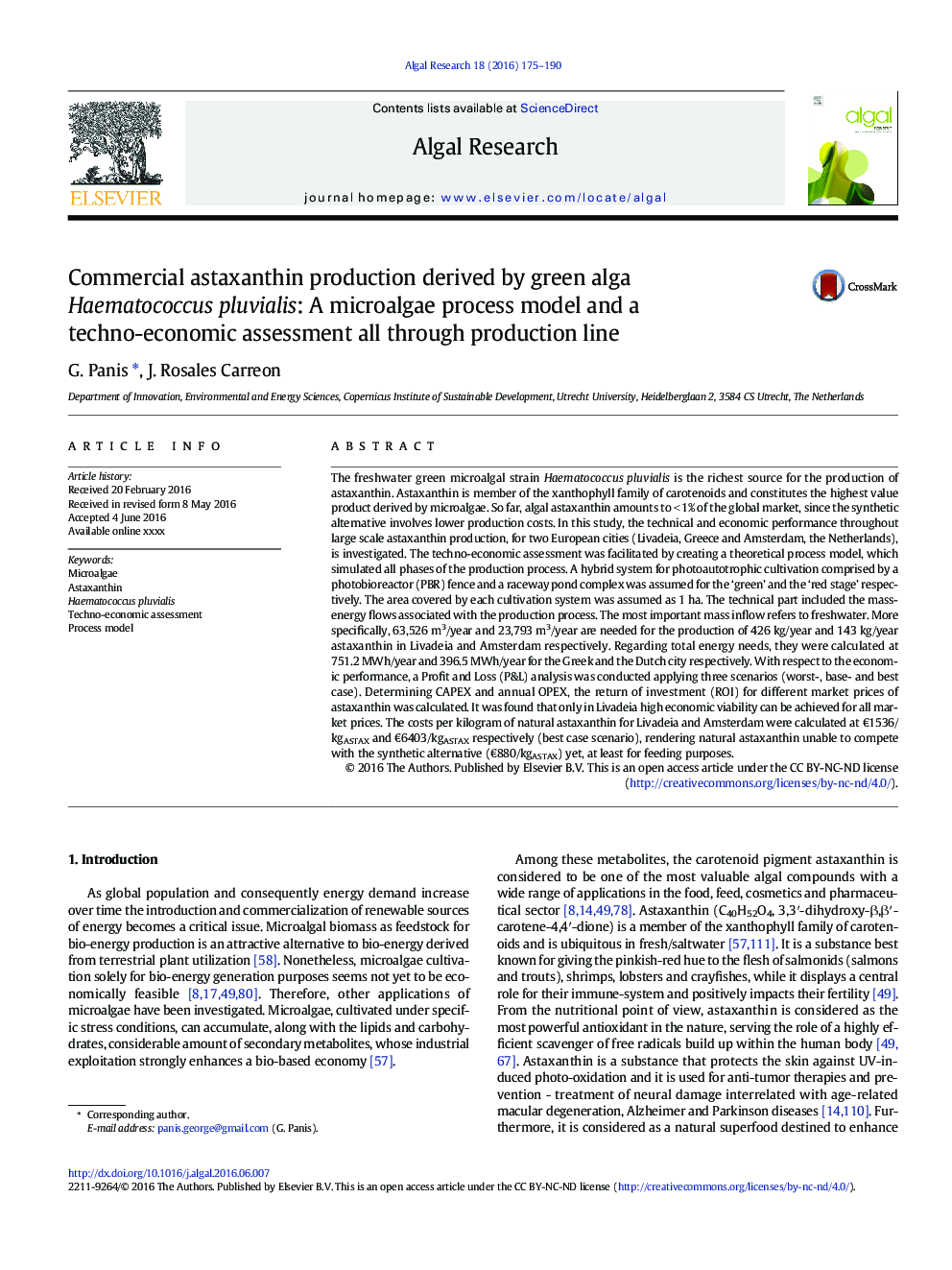| Article ID | Journal | Published Year | Pages | File Type |
|---|---|---|---|---|
| 8086777 | Algal Research | 2016 | 16 Pages |
Abstract
The freshwater green microalgal strain Haematococcus pluvialis is the richest source for the production of astaxanthin. Astaxanthin is member of the xanthophyll family of carotenoids and constitutes the highest value product derived by microalgae. So far, algal astaxanthin amounts to < 1% of the global market, since the synthetic alternative involves lower production costs. In this study, the technical and economic performance throughout large scale astaxanthin production, for two European cities (Livadeia, Greece and Amsterdam, the Netherlands), is investigated. The techno-economic assessment was facilitated by creating a theoretical process model, which simulated all phases of the production process. A hybrid system for photoautotrophic cultivation comprised by a photobioreactor (PBR) fence and a raceway pond complex was assumed for the 'green' and the 'red stage' respectively. The area covered by each cultivation system was assumed as 1 ha. The technical part included the mass-energy flows associated with the production process. The most important mass inflow refers to freshwater. More specifically, 63,526 m3/year and 23,793 m3/year are needed for the production of 426 kg/year and 143 kg/year astaxanthin in Livadeia and Amsterdam respectively. Regarding total energy needs, they were calculated at 751.2 MWh/year and 396.5 MWh/year for the Greek and the Dutch city respectively. With respect to the economic performance, a Profit and Loss (P&L) analysis was conducted applying three scenarios (worst-, base- and best case). Determining CAPEX and annual OPEX, the return of investment (ROI) for different market prices of astaxanthin was calculated. It was found that only in Livadeia high economic viability can be achieved for all market prices. The costs per kilogram of natural astaxanthin for Livadeia and Amsterdam were calculated at â¬1536/kgASTAX and â¬6403/kgASTAX respectively (best case scenario), rendering natural astaxanthin unable to compete with the synthetic alternative (â¬880/kgASTAX) yet, at least for feeding purposes.
Related Topics
Physical Sciences and Engineering
Energy
Renewable Energy, Sustainability and the Environment
Authors
G. Panis, J. Rosales Carreon,
